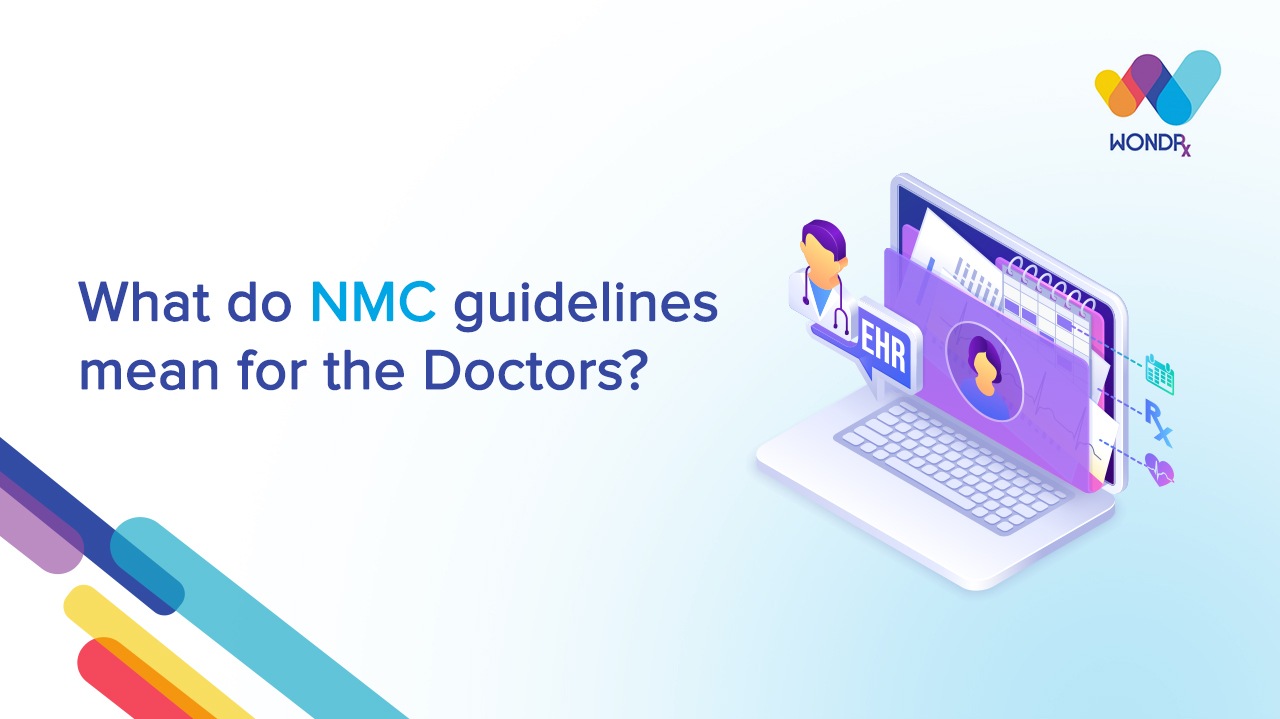NMC (National Medical Commission) Guidelines – What do they mean for Doctors?

Implementation of ever-evolving technology has highly benefited the healthcare system over the past few years, with the future holding even greater benefits in improving healthtech efficiency and patient care. Taking into consideration the numerous advantages of digitalization in other facets of our infrastructure, the Government of India has announced the transition of traditional medical records to Electronic Medical Records or EMRs. As per a recent set of guidelines set by the National Medical Commission (NMC), Registered Medical Practitioners (RMPs) are supposed to maintain a digital trail of their patient's records. While it may be a meticulous process, the following are a few things that need to be taken into consideration while adopting this change.
Cost of Implementation
As per several studies, the installation of an Electronic Health Record (EHR) system in a Hospital can cost between INR 9,00,000 to INR 45,00,000 while for an individual clinic it may be anywhere between 20,000 to 100,000. Usually, while evaluating any EMR / EHR we skip many cost aspects; we have listed the key ones for your thorough evaluation so as you do not miss out on total cost of ownership (TCO):
- Hardware setup
- Software installation
- Implementation assistance
- Staff training & retraining at future version upgrades
- Maintenance
- Internet / Wi-Fi
While it is a necessary transition, doctors are recommended to do a good amount of research before deciding on the EHR / EMR system best suited to their budget.
Staff Training
Another factor that is of utmost importance in switching to EMR is the thorough training required for the staff. The medical team is required to be well-versed with the EMR system before implementing it. It is the responsibility of RMPs to make sure that their team of medical practitioners and nurses are trained the right way, thus it is vital to plan the whole process aptly.
People involved in the Process
Transitioning to an EMR system involves not just the RMP or the medical staff but the patients too. For doctors, it could be challenging to change their habit of using pen and paper for writing their Rx the traditional way. For the medical staff, the transition and subsequent maintenance of digital records can be a long-drawn process. As for patients, it is important to take their consent and bring them onboard during the process.
Data Privacy
A major challenge in implementing an electronic medical records system is the data privacy concern of patients and medical providers alike. The risk of patient data leakage or loss due to cyber-attacks or natural disasters, and the measures to be taken to curb them primarily during the transition process. RMPs need to be educated on the legal penalties that can be levied on, failing to provide maximum and highly-regulated data privacy while maintaining electronic health records. Hence, technology providers need to ensure that privacy risks be mitigated to the lowest by providing data security during and after the transition.
Factoring in all the aforementioned points, technology providers need to devise strategic solutions that will be tailor-made to best suit the RMP’s requirements. They also need to ensure that the regulatory guidelines set by the NMC are followed without disrupting the workflow of the medical force while warranting that each challenge is deterred without overwhelming any of the persons involved in the process. As seen in other segments, digitization into EMR systems is expected to have a positive impact on the medical fraternity if done the right way.